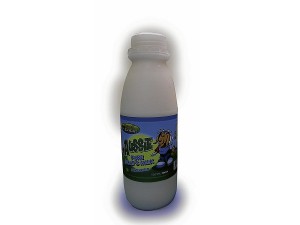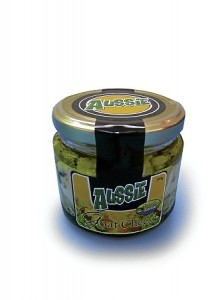Precious goat milk goes up the value chain
TARLAC CITY—Goat and sheep growers here are all thinking of “F4.”
What is on their minds is not the popular boy band from Taiwan, but the fourth generation of goats which they started breeding a decade ago—an enhancement of the native race is how they described it. “F4” refers to a native goat now carries 93.75 percent of a foreign goat’s qualities.
The task of ensuring that superior quality goats are raised for meat and milk falls on the lap of the Goat and Sheep Producers Association of Tarlac (Gaspat). The group counts about 1,000 backyard goat raisers and commercial growers.
For Noel Soliman, recently elected president of Gaspat, the interest in goats is natural, he being a veterinarian. It was in college where he learned about genetics and cross breeding in small ruminants like goats and sheep. He practiced these at his home farm.
Soliman says goats’ potential as sources of meat and milk is enormous. The meat, called chevon, is lean and healthy, while the milk is said to be second best after mother’s milk.
Article continues after this advertisement“We need only do practical science to achieve a level where the goat population can be increased so we can buy goat meat in the market at competitive prices, the way we buy beef and pork,” he says.
Article continues after this advertisementTo achieve this, Soliman says, there is a need to enhance the quality of the native goat.
As it is, the native goat is small, stocky and weighs only 20 to 30 kilograms in maturity. The milk it produces is good only for its kids.
However, he says, the best characteristic of a native goat is that it is more resistant to diseases.
While the introduction of foreign breed in the Philippines started in the early 1990s through a government program, Soliman says their initiation into the enhancement program started 11 years ago when Gaspat members were invited by members of the Australian Trade Mission to Australia after their visit in Tarlac.
From that trip, Gaspat members were able to buy purebred bucks to start their enhancement project.
These bucks, among them Anglo-Nubians, Saannen, Boer and Alpine breeds, grow up to about 70 to 90 kg, producing three times more meat than the native goat, and up to 2 liters of milk a day.
Soliman says generating the best combination of genetics in the animal requires time and patience.
From these original imports came the “F4” generation, says Soliman. What is referred to as “F1,” he says, is the offspring of a pure bred buck and a native doe. An “F1” doe then is paired anew with an imported buck of the same breed to produce an “F2” and so on.
Soliman says investing in an initial set of five native does and an imported buck is a good start for backyard goat raisers.
Having a group like Gaspat is also helpful because members can swap or lend each other their imported breeders. For those who can not have breeders yet, the Bureau of Animal Industry is providing artificial insemination services for goat raisers.
However, Soliman says, backyard goat raisers must veer away from the old practice of letting their goats fend for themselves in the yard.
It is important that these goats be provided good housing and fed and grazed properly.
“You’ll be surprised that, aside from grass, the most nutritious plants for goats are in abundance here,” he says.
For Jeff Lim of JSS Goat Farms, the interest in goats started when he scoured Tarlac’s remote villages in search of a goat to buy so his family could cook caldereta to celebrate a birthday. He couldn’t find one.
Even if he offered to pay a little more for a mature goat, the raisers told him tell that their stock had been reserved for a fiesta or some other occasion, Jeff says.
Jeff realized at the time that goats were scarce and that there was a market for them.
Soon enough, Jeff started to raise goats.
In the 1990s, he was introduced to imported breeds through the government’s goat dispersal program.
“It was good to go back to the basics,” says Jeff, describing goat raising as an all natural farming.
Common interest and the need to organize brought him, Soliman and other goat raisers together to form Gaspat.
With a bigger herd now producing more than what kids require, Jeff’s wife Kathryn, who has a degree in chemistry, started experimenting on the extra milk when a friend came looking for cheese.
The cheese was initially produced for home consumption with some given out to friends. But the demand started to grow and soon, JSS Farms expanded, accommodating a small laboratory.
Some of their neighbors later came to them for their supply of goat milk. Soon, the couple realized that the cheese had a special market.
Today, JSS farms produces cheese and milk sold under the brand “Aussie.”
Kathryn says it takes two days to process goat milk into feta cheese, and each liter of milk produces 180 gram of cheese.
Their product, she says, is certified healthy by the Food and Drug Administration.
Gaspat members also formed the Global Agriventures Marketing Cooperative Inc. to maximize their resources. Using the facilities and technical know-how of JSS Farms, Gaspat members began bringing milk here for bottling and processing into cheese.
These initiatives of goat raisers and producers of Tarlac did not go unnoticed among livestock farmers in the country because they visit Tarlac to look at the farms and products and to learn from their experiences.
For Soliman and the Lim couple, this is a welcome development because finally, goat raising as a healthier alternative to food production and security, has gotten the attention it deserves.

